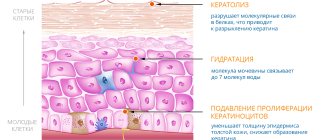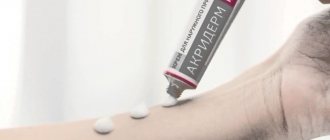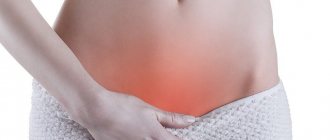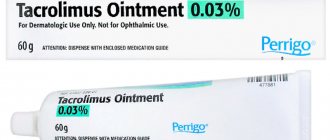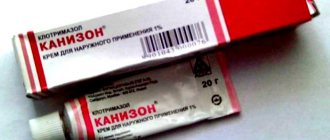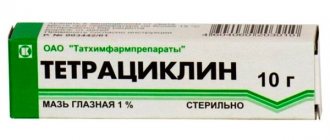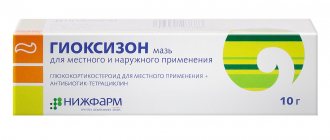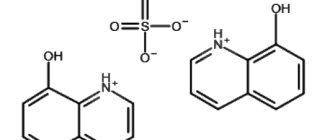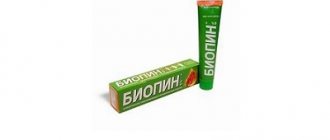pharmachologic effect
Antimicrobial agent - quinoxaline.
Broad-spectrum antibacterial bactericidal drug. Active against Proteus vulgaris, Pseudomonas aeruginosa, Klebsiella pneumoniae, Escherichia coli, Shigella dysenteria, Shigella flexneri, Shigella boydii, Shigella sonnei, Salmonella spp., Staphylococcus spp., Streptococcus spp., pathogenic anaerobes (Clostridium perfringens). Acts on strains of bacteria resistant to other antibacterial drugs, including antibiotics.
Does not have a local irritating effect.
The development of drug resistance in bacteria is possible.
Treatment of burn and purulent-necrotic wounds with ointment promotes faster cleansing of the wound surface, stimulates regeneration and marginal epithelization and has a beneficial effect on the course of the wound process.
Experimental studies have demonstrated the presence of teratogenic, embryotoxic and mutagenic effects.
Instructions for use
Inflammatory diseases of the dermis can be triggered not only by the introduction of pathogenic microorganisms into the tissue. Damage can also be caused by other external or internal etiofactors. Dioxidin is prescribed to patients regardless of the origin of the pathology. In case of infectious-inflammatory lesions, it eliminates the cause of their appearance.
If the disease is caused by circulatory or metabolic disorders, the drug is used for preventive purposes.
A traumatologist or dermatologist must take into account that bacteria develop resistance to the active ingredient of the product. Unlike antibiotics, resistance develops quite quickly. Therefore, during the treatment process, after laboratory tests, treatment regimens can be supplemented.
Indications and contraindications
Dioxidine in ointment form is intended for external use only. The drug has proven itself in eliminating ulcers - cavities filled with purulent exudate. Such formations on the skin occur with furunculosis, folliculitis, and sycosis.
With the help of a bactericidal agent, it is possible to quickly eliminate pyogenic bacteria - the causative agents of streptococcal and staphylococcal pyoderma. Also, the following pathological conditions are indications for the use of Dioxidin ointment:
- wound infections;
- burn injuries of various nature - thermal, chemical, radiation;
- superficial wounds of various locations, accompanied by the accumulation of purulent exudate;
- purulent skin lesions due to osteomyelitis;
- soft tissue abscess;
- purulent inflammation of breast tissue (mastitis).
Dioxidin is used for therapeutic procedures after surgical interventions. It is used to treat sutures to prevent infection of injured soft tissues. But more often a solution of the same name is used for this purpose.
Clinical studies revealed the teratogenic, embryotoxic, mutagenic effects of hydroxymethylquinoxylin dioxide. Therefore, Dioxidin treatment is not carried out during pregnancy and lactation.
An absolute contraindication to therapy is individual intolerance to the active or auxiliary component. If there is a history of adrenal insufficiency, the ointment is not prescribed to patients.
Directions for use and doses
In stationary conditions, preliminary treatment of wounds is carried out. Necrotic masses and purulent exudate are surgically removed. Then a thin layer of ointment is distributed over the affected area of the body.
To ensure a pronounced bactericidal effect, it is enough to use Dioxidin once a day. At home, the edges of the wound are pre-treated with antiseptic solutions. Sterile wipes are used to remove pus and blood.
Single and daily doses are determined by the attending physician. The duration of the therapeutic course is 14-21 days. If the skin does not recover during this time, you should consult your doctor.
Side effects and special instructions
With long-term use of Dioxidin, penetration of its active substance into the systemic bloodstream is possible. This causes headaches, dizziness, and dyspeptic disorders. The drug must be discontinued and detoxification therapy performed.
Local side effects are more often diagnosed. An allergic reaction develops at the site of application. Its leading symptoms are similar to those of inflammatory pathologies:
- rashes form;
- the skin swells and turns red;
- local body temperature rises;
- burning, itching, and painful sensations occur.
The ointment should be removed from the surface of the wound and an antihistamine tablet should be taken (Tavegil, Cetrin, Loratadine).
Often, along with Dioxidin, regeneration stimulants and antiseptics are included in treatment regimens. To avoid chemical interactions between the drugs, they should be applied after 20-30 minutes.
We recommend
Review of ointments for burns. Pros and cons, doctor's recommendations and patient reviews.
Indications for use of Dioxidin
Dioxidin is used in the treatment of purulent diseases caused by various bacterial infections.
Externally used for:
- Infected burns;
- Non-healing wounds and trophic ulcers, as well as for the healing of deep and superficial wounds of various locations;
- Soft tissue phlegmon;
- Purulent wounds with osteomyelitis.
Intracavitary administration of Dioxidin in ampoules is used for:
- Purulent processes in the chest and abdominal cavity;
- Lung abscesses;
- Peritonitis;
- For purulent pleurisy and pleural empyema;
- Cystitis;
- Wounds with deep purulent cavities. These may be pelvic cellulitis, soft tissue abscesses, purulent mastitis, postoperative wounds of the urinary and biliary tract.
Contraindications
Dioxidin according to the instructions is contraindicated in case of hypersensitivity to the active substance - hydroxymethylquinoxaline dioxide, and in case of adrenal insufficiency.
The drug is not used during pregnancy and lactation, as well as in childhood.
Dioxidin is prescribed with caution according to the instructions for renal failure. If necessary, the dose of the drug can be reduced.
In pediatrics, nasal drops with Dioxidin are often used in the treatment of rhinitis and sinusitis. Being an antibiotic, the drug successfully treats these diseases of almost any origin, providing anti-inflammatory, antiallergic and decongestant effects. To use Dioxidin in the nose, use a 0.5% solution of the drug and instill it into each nostril 4-5 times. Before use, you should consult an ENT doctor.
"Dioxidin" (ointment): reviews
There are many different opinions about the medicine. Most consumers note the high cost of the drug. After all, other antibacterial compounds can be purchased at a lower price. However, their effectiveness can be very low. Therefore, doctors do not advise trying to save money. Doctors say that Dioxidin is effective even in cases where many antibacterial compounds cannot solve the problem.
Patients say that the medication has a non-greasy consistency. The medicine is more like a cream or gel. The ointment is loose and quickly absorbed into the treated area. Many consumers resort to using compresses. After applying the ointment, they cover the wound with a bandage and wrap it with a bandage. However, doctors do not advise performing such actions on your own. In the open air, the wound will dry out and heal much faster than under a bandage.
Doctors advise using the medication in the facial area with extreme caution. This is often necessary for severe burns, boils, suppuration and other pathological processes. Try to treat only the damaged area without affecting healthy skin.
There are practically no negative reviews about the drug. Most consumers are satisfied with the medicine. They say that the effect of treatment becomes noticeable within a few days.
general description
The medication “Dioxidin” is available in different forms. The ointment contains the active substance of the same name. For every 20 grams of creamy substance there is 1 gram of dioxidine. The drug also contains additional compounds, which are called minor components: nipagin, polyethylene oxide, paraoxybenzoic acid.
Dioxidin (ointment) is produced in 30 gram tubes. Each container is placed in a cardboard box. There is also an annotation that needs to be studied. The cost of the described medication is 400 rubles. However, the price may vary in one direction or another depending on your region of residence.
Compound
The effectiveness of this ointment is explained by the action of a substance - hydroxymethylquinoxylin dioxide, which was discovered at the end of the 20th century. Its concentration in the product reaches 5%. This substance has a wide range of applications against bacteria.
It is worth noting that it very actively has a suppressive effect on them, their nutrition and reproduction, which contributes to absolute relief from the disease. Among the components:
- macrogol 400;
- macrogol–1500;
- liquid paraffin;
- purified water;
- medical Vaseline;
- distilled monoglycerides;
- Hydroxymethylquinoxyline dioxide.
All components of the medicine have a mild effect, which makes it possible to use the drug for quite serious skin ailments.
Adverse reactions to the use of the drug for topical use
In most situations, Dioxidin is well tolerated. Ointment can only sometimes cause allergies and lead to the development of periwound dermatitis. If the patient has a tendency to develop such reactions, then antihistamines should be simultaneously prescribed for the purpose of their prophylactic use. A doctor should also select such a drug.
If, despite all efforts and preventive measures, an allergy still appears, then you need to stop treatment and consult a doctor. Perhaps another medication with an antibacterial effect will be selected for you.
Contraindications and side effects
The drug solution may cause the following side effects:
- elevated temperature;
- headache;
- chills;
- convulsions;
- allergic reactions in various manifestations (skin rash, itching and burning sensation, redness of the skin);
- vomiting and nausea.
Dioxidin ointment, when used externally, can cause periwound dermatitis. Some patients, when treated with ointment, noted the appearance of pigment spots on the surface of the skin. In such situations, it is recommended to reduce the dosage of the drug or increase the time interval between uses. If such methods do not eliminate side effects, then it is necessary to stop using the medicine.
Attention! Often, along with Dioxidin, drugs that stimulate regenerative processes and antiseptics are prescribed in the complex of therapy. In order to prevent chemical reactions between the components of the medicines, it is recommended to use them after 20-30 minutes.
Among the contraindications to ointment therapy:
- Personal intolerance to ointment components.
- Pregnancy or lactation period.
- Insufficiency of functions of the adrenal cortex.
- Impaired renal function, acute renal failure.
- Age category up to 12 years.

